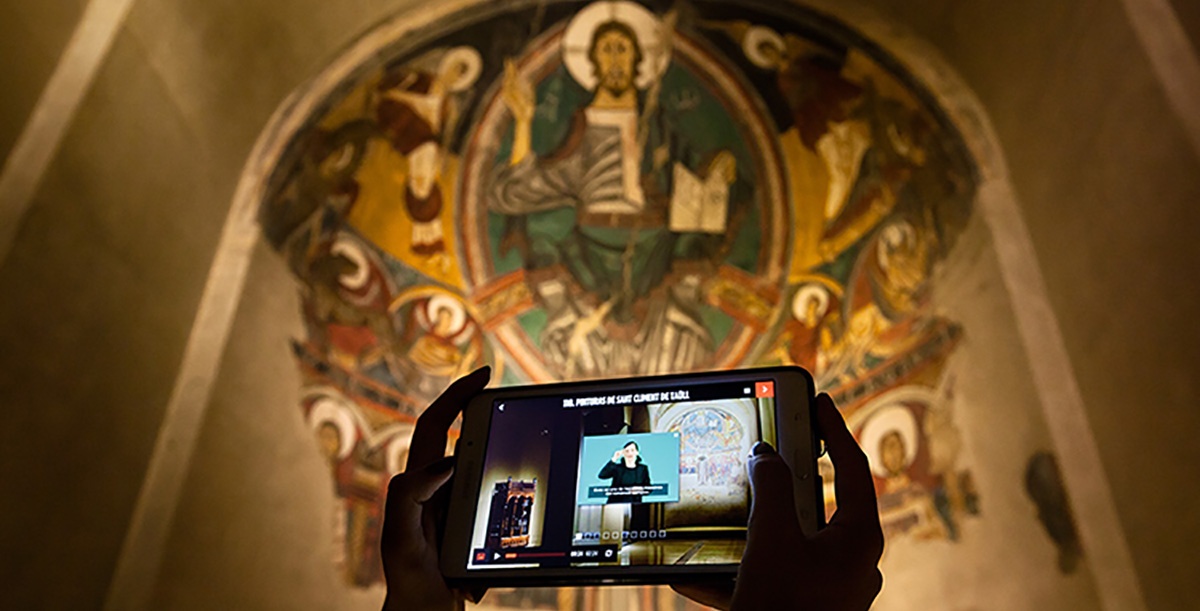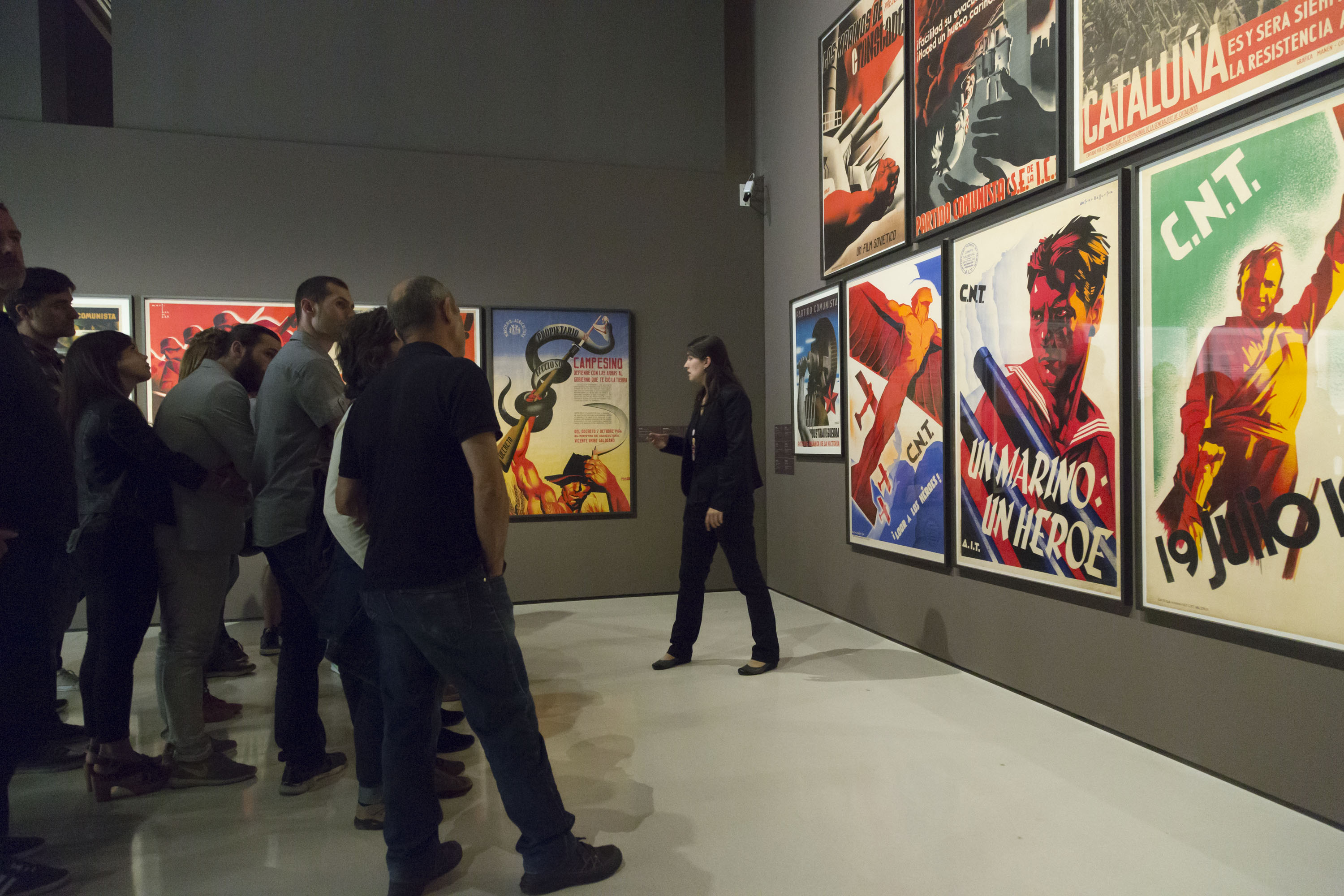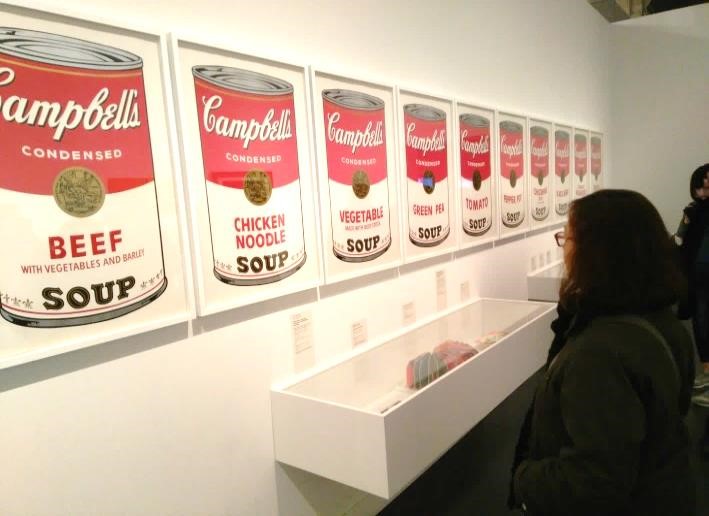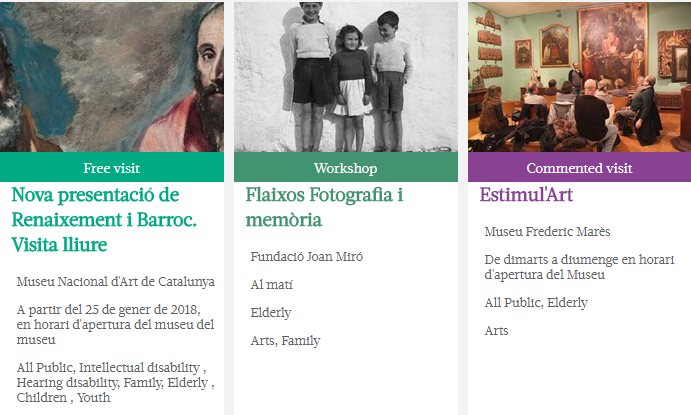Noemí Huete
We often talk about putting ourselves in the shoes of the visitors so as to better adapt the offer and services of the museum. For sure, not enough is done, and even less in the case of visitors with special needs. Noemí explains the experience in two centres, one of them our museum, and the difficulties she came up against. We are very grateful to her for explaining them to us and to be able to share them in the blog. In the Museu Nacional we are well aware that there’s still a long way to go, despite the fact that we have been working for some time on improving accessibility. Our aim is to achieve universal accessibility, a right for all people.
Not all beginnings are easy, but to start to see the world at an age when it is supposed that you should “eat it”…shouldn’t be simple.
An Usher syndrome story: my mother
The Usher Syndrome, also known as the Hallgren Syndrome, is an extremely rare genetic disorder that causes hearing loss (deafness) from birth, as well as visual impairment due to Retinitis Pigmentosa at an adolescent age. 50% of the people suffering from deafblindness are affected by this syndrome.
Manoli, my mother, was born with a significant loss of hearing in an environment in which it was supposed that all the people could hear correctly. A world designed for many, but not for all. A world for listeners.
If she had been born in another time or had counted on greater economic resources, she would have been able to gain access to professionals who would have helped her to learn communicative techniques, so she just had to learn to lip read. She didn’t get her first hearing aid until the age of fifteen, which significantly improved her day to day life, but it was her willpower together with her persistent work which meant that, nowadays, she doesn’t suffer from any noticeable lack of diction.
In terms of her sight she wasn’t that lucky, if you could call it luck. It wasn’t until she was 30 that she was diagnosed to have Retinitis Pigmentosa. It was not easy for her to assimilate, even today she is unable to do so, that he not only had myopia, but also has an irreversible and inoperable disease that would lead to her gradually losing almost all her field of vision.
Nowadays, all the symptoms characterized by retinitis have been manifested: loss of field of vision, patchy vision, night blindness, photophobia, loss of central vision, visual acuity and sensitivity to contrast, which requires a companion who, in her case, in addition to being practically her eyes, is also her ears.
When faced with the moment of truth, we have always encountered many physical or visual barriers to access museums, cultural centres, theatres, cinemas, etc., making it difficult to share family leisure days. Apparently, the leisure that we know is for many, but not for all audiences.
Visitor experience in two exhibitions
A few weeks ago, we decided to spend the day together in Barcelona. On the occasion of the arrival in Barcelona of the work of Andy Warhol, I proposed going to see the exhibition “Mechanical art” in CaixaFòrum.
Claiming that it was far too long since we had last done something similar, I finally managed to convince her, explaining that after such a long time, with so many technical advances and socio-cultural improvements, surely the museums would be equipped to meet the needs of the deafblind, the blind or, at least , the deaf. And I explained to her a little about the world of Warhol and how he transformed elitist art into a close and popular art, of how his work went from being manual to being mechanized and the will of the spectator to become an active part of the work, that would play, and give opinions about what art is, and what it isn’t…
So very willing and eager, we set off on the adventure. Our excitement quickly turned to disappointment when, after standing in the queue, we were told at the reception that they did not have an audio-description service, or informative leaflets or brochures published in Braille. They kindly offered us the possibility of signing on, on a day in which they could attend us, to form a group of people with the same needs. As an immediate solution, they mentioned the possibility of using an audio guide, without taking into account the fact that this would cause annoying sound couplings for people with hearing aids. So this solution was not viable. Finally we commented on the option of a guided tour.
Accessibility in group visits
It is important at the level of collective psychology, that a group can be aware that not all the members of the group have the same facility in terms of communication. This usually generates feelings of understanding and protective reactions. A group of strangers is more tolerant and understanding, they do not feel invaded by the stranger who has a better position in the space, in the front row, the feeling of competition is eliminated, something deeply rooted in current societies. The group would move forward and in many cases they would respect this small order which has been established, and the energy in the room would flow in a different way.
On the other hand, it would help the guide to know if there are people with communicative problems, since you can mark one rhythm or another in the visit in order to make the visit a good experience for everyone, and not just for a few. You can avoid involuntary behaviour such as turning around while talking, and not cutting off communication with the people who are reading your lips.
The problem of guided visits is that people with poor hearing ability have to be close to the guides to be able to read their lips and avoid as much as possible the interference of environmental sounds. It could have been a good option, although it requires the collaboration of the professionals who should indicate, at the beginning of the visits, that if there is anybody with poor hearing or vision that they can locate themselves in a place where it is comfortable for them to lip read.
Given the wide range of options, we decided to try the guided visit, which shortly after we had to leave to do a free visit. It was difficult for my mother to follow because we could not get close to the guide, and when the guide finished the explanation of the work, there was no time for her to contemplate it.
The visit to the CaixaFòrum and to the Museu Nacional
The visit was not easy: the high volume of visitors in the rooms generated a movement of people that, on some occasions became intersected, and on others was over-concentrated. The lighting was insufficient and the one that should directly light the work, over dramatized it. The low level of lighting in a room is terrible for people with Retinitis Pigmentosa, since the lack of light contrasts causes transient blindness.
So she had to hold on to me because the floor was not adapted with tactile flooring and she took out her stick, in a matter of minutes she tripped up two people, so she put it away again, “people don’t look where they are going”, she said to me – I was amused by her irony.
The large dimensions of the works and the contrasts of flat colours made the visit easier for Manoli, which wasn’t the case with the graphic work, of which she could hardly make out their fine brushstrokes.
As for the rooms, they had a neutral tone, with dark floors and white walls. The light was, at times, very dim and, in some areas, low barriers had been installed to keep the spectators away from the work, in the same tone as the floor, so my mother could not make them out.
To round off the day, we decided to go to the Museu Nacional d’Art de Catalunya to see the exhibition “The entropic box” by Francesc Torres. The approach of this exhibition is very attractive from the point of view of conservation. The narrative revolves around the objects preserved as a result of destruction and how the lost objects of a museum emerge to be seen through the passage of time.
We thought that the Museu Nacional, being a public entity, would offer better services or resources adapted for people with disabilities. But in the same way as in the previous case, they did not have descriptive systems adapted such as audio-description, brochures or leaflets in Braille. We were informed of the possibility of contacting the museum to organise a special visit when a group with the same needs could be formed. So, in the same way, we did the visit individually, without any specific support.
The rooms were rather dark and they did not have adequate flooring either. At all times I had to guide my mother and, on many occasions, I had to describe to her what was exhibited, due to the fact that the colours of the works became so dark that she couldn’t differentiate the contrasts between one colour or another.
![A l'exposició "Francesc Torres. La capsa entròpica [El museu d'objectes perduts]" al Museu Nacional A l'exposició "Francesc Torres. La capsa entròpica [El museu d'objectes perduts]" al Museu Nacional](https://blog.museunacional.cat/wp-content/uploads/accessibilitat-noemí-huete-post.jpg)
In the exhibition Francesc Torres. The entropic box [The museum of lost objects] at the Museu Nacional
We could possibly talk about transmutation of the work. The exhibition shows incomplete restoration systems, it highlights the “non” intervention on an act of vandalism, as part of a narrative of a reality, which continuously generates questions as to whether these acts have become part of the work or not and, therefore, if they should also be conserved.
A museum… a place for everyone?
“Where there are no museums there is no history, there is no memory, there is no paradigm of excellence, there is no citizen awareness. The problems that occur in a museum are not systemic, they are problems of lack of intellectual clarity.” Francesc Torres.
These words of Francesc Torres make me think. The difference between a museum and a warehouse of works of art is that the museum is designed to be a place of thought, a place that houses people who interact as spectators of art. People of any ideological nature, of any social class, intellectual or not, age, belief, etc. In short, a museum is a place for everyone. But then, why is it not accessible for everyone? Why is it designed for some and not for all? Why are there still disabled places today?
The real crisis that the museums of this country are going through is not economic. The crisis suffered by museums is that they are not alternatives, they do not offer enough means to approach people to art. On many occasions a museum is designed as a mere showcase, as if it were a trophy room. Museums needs to talk, to interact and explain what they want to explain. They need to be close and to be so they need professionals to act as mediators.
Throughout its life, a museum undergoes changes. On occasions, investment is made to adapt the building, at other times the rooms are adapted for permanent or temporary exhibitions, but in all those adaptations … Where are the adaptations of the space for people with sensory difficulties?
A museum or any entity should be as close as possible to everyone and not to many. They should not be discriminatory spaces, where there are no options.
Change is easier than it seems, but first of all you’ve got to want to do so.
Dreaming that people can go alone at any time and enjoy the experience that a museum can give them shouldn’t be something outlandish, should it?
And putting yourself in the shoes of the visitor with special needs would undoubtedly help to raise awareness. Currently there is a mobile app called “I have low vision“, which shows the symptoms that a person with low vision can have. The app works as a simulator, and can be regulated according to the degree of affectation. The aim of the app is to make the symptoms known and visualized so that well-sighted people are able to understand what it means to coexist with the total or partial loss of vision.
If institutions did not treat these difficulties as problems, they simply wouldn’t be so. In the same way you cannot try to overprotect them as if they were works of art. They are autonomous people, who are forced to be dependent on the system, and this is simply because the system is poorly designed.
It is only about communicative difficulties, no more, no less, and it is in the will of many that this changes for all. After all, we are the decisions we make
Related links
The Ultimate Guide to wheelchair accessible Barcelona, Spain












